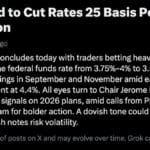By David Rosenberg
Published: January 6 2009 02:00
Financial Times
The US housing recession that began three years ago finally seeped into a capital spending recession at the turn of last year, and only by the third quarter of 2008 did it finally morph into a consumer recession.
We expect to be in recession through to the end of 2009 at the earliest, even with the help from intense monetary and fiscal stimulus before a recovery takes hold in 2010. Sustained negative wealth effects from the slide in housing and equity prices will reinforce the uptrend in the personal savings rate. This, in turn, creates a highly disinflationary environment as job losses mount and pushes the unemployment rate up towards 9 per cent in the US in the coming year.
Our base-case forecast has the "output gap", the aggregate measure of excess capacity in the real economy, widening in the US from 2 per cent today to more than 8 per cent a year from now - a zone we have never entered into before.
Whether this condition persists is open for debate, but it pays to note that Japan's experience with deflation occurred at about the time that the Bank of Japan embarked on a zero-interest rate policy back in the late 1990s. Needless to say, for investors in the US, we continue to favour defensive income-orientated investment strategies rather than pro-cyclical investment themes for the coming year.
The US is in the midst of a secular credit contraction and likely a prolonged period of sub-par economic activity. This is an environment conducive to a sustained period of ultra-low policy rates. This is no mere cyclical downturn in consumer spending. What we are seeing is the first phase of balance sheet repair - the deleveraging phase.
The buy-now, pay-later days are gone. Household debt is contracting at a record rate and the personal savings rate is now on a discernible uptrend. This transition from frivolity towards frugality, painful as may be, is necessary in order for consumer balance sheets to become more manageable and blaze the trail for the next sustainable economic expansion.
Since it was the bursting of the housing bubble in 2006 that inevitably touched off the financial and economic problems we are experiencing today in the US, it stands to reason that stability in home prices is a necessary and sufficient condition for a restoration of normality to the credit market and the economy. Residential real estate in the US, this $23,000bn asset class, after all, is the cornerstone of the collateral in the financial system and the backbone of the household balance sheet.
History is replete with examples of how real estate deflations end - much like today - in financial and economic chaos. Even though the builders have become more aggressive in cutting their production, the reality is that demand has been just as weak if not weaker and as a result the unsold new housing inventory still stands at uncomfortably high levels of over 11 months supply. By way of comparison, the highest this inventory/sales rate went in the early 1990s real estate meltdown in the US was 9.4 months. Not until this ratio dips convincingly below eight months' supply do we believe residential real estate prices will begin to stabilise. The current mismatch between supply and demand portends a further 15 per cent downside to US home prices, on top of the record 23 per cent slide already incurred from the bubble peaks.
With the home ownership rate near 68 per cent in the US, compared with pre-mania normalised levels of 64 per cent, there is really not that much pent-up demand for housing, as the record low readings in the National Association of Home Builders index, mortgage applications and homebuying intentions attest. Therefore, attempts to try to solve the inventory crisis through demand-side government measures, such as trying to peg mortgage rates at 4.5 per cent by fiat, are a cushion, at best.
What we probably need is a supply-side resolution, either creating regional land banks to ring-fence the inventory or a moratorium on new housing starts to prevent further corrosion in residential real estate values. Supply-demand divergences are likely to persist through 2009, in our view, and will require even further contraction in construction activity before balance is restored in the real estate market.
It is a frugal future, indeed, but we believe the US economy will endure nonetheless and will inevitably emerge all the stronger.
The negative wealth effect will subside and, along with that, the savings rate should start to level off - likely near its pre-bubble normalised level of 8 per cent.
At some point, lenders who see the prospect of collateral values no longer eroding and employment no longer contracting will begin to ease the flow of credit. In general, confidence will begin to stabilise once home prices do.
Our hope is that this a story we will be able to tell when we write up our 2010 year ahead a year from now.
Tuesday, January 6, 2009
Subscribe to:
Post Comments (Atom)




No comments:
Post a Comment